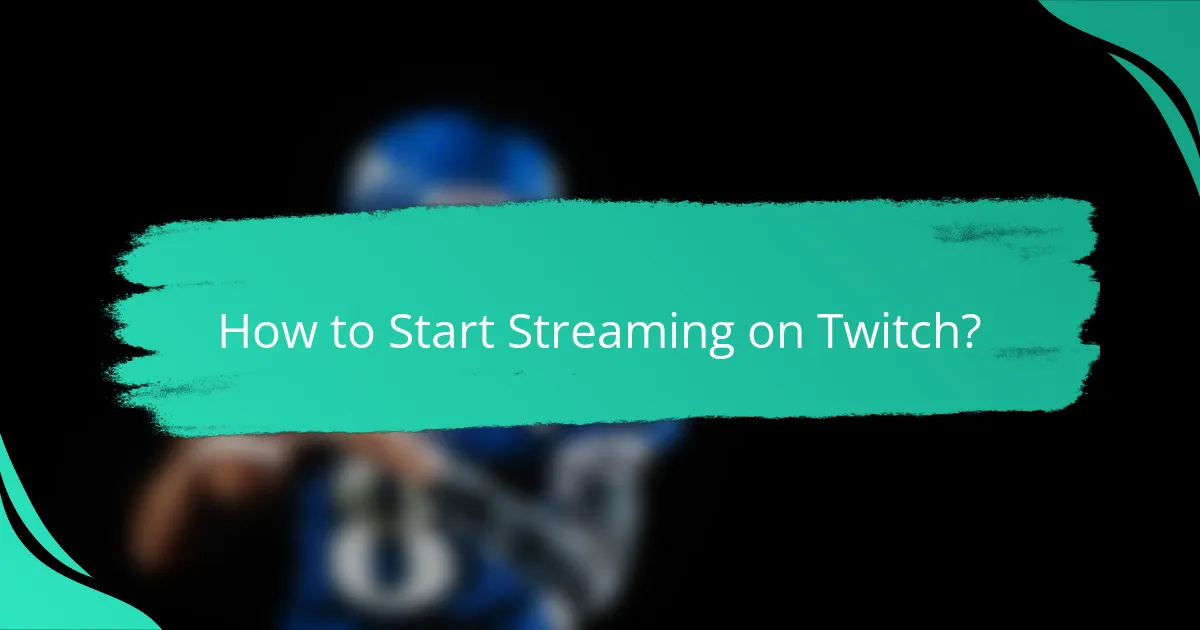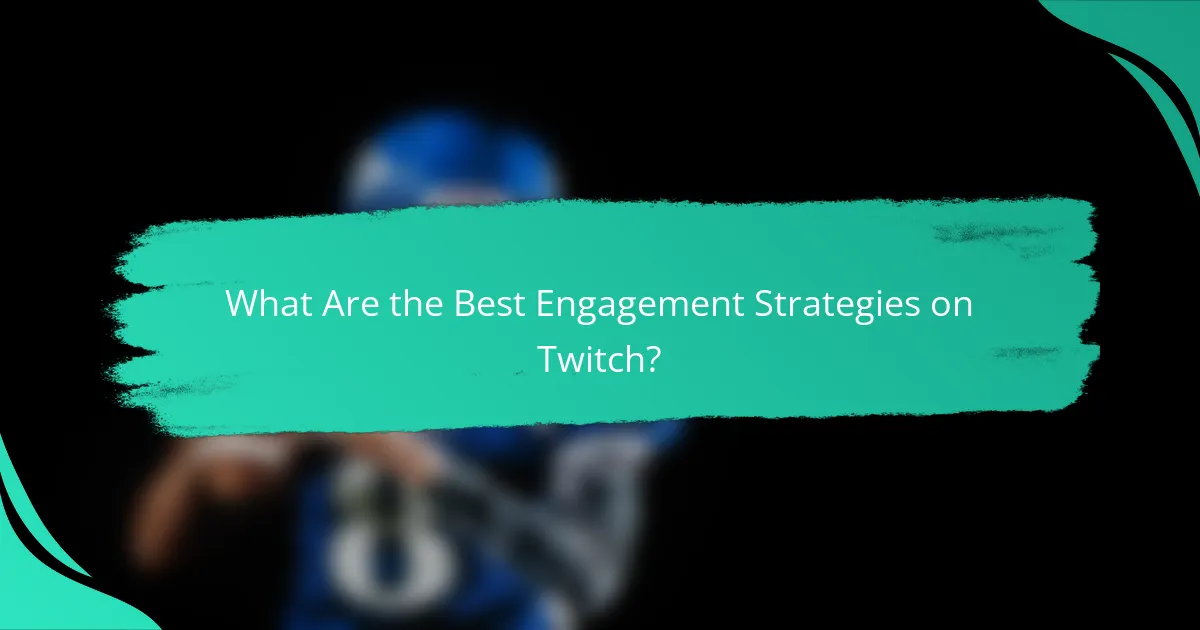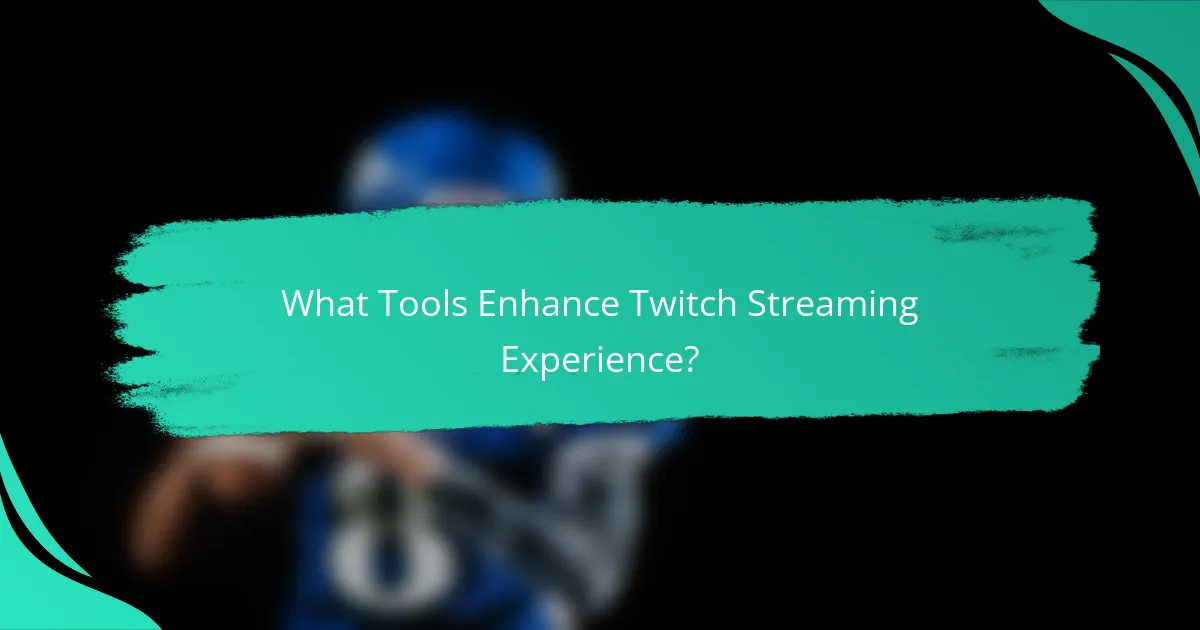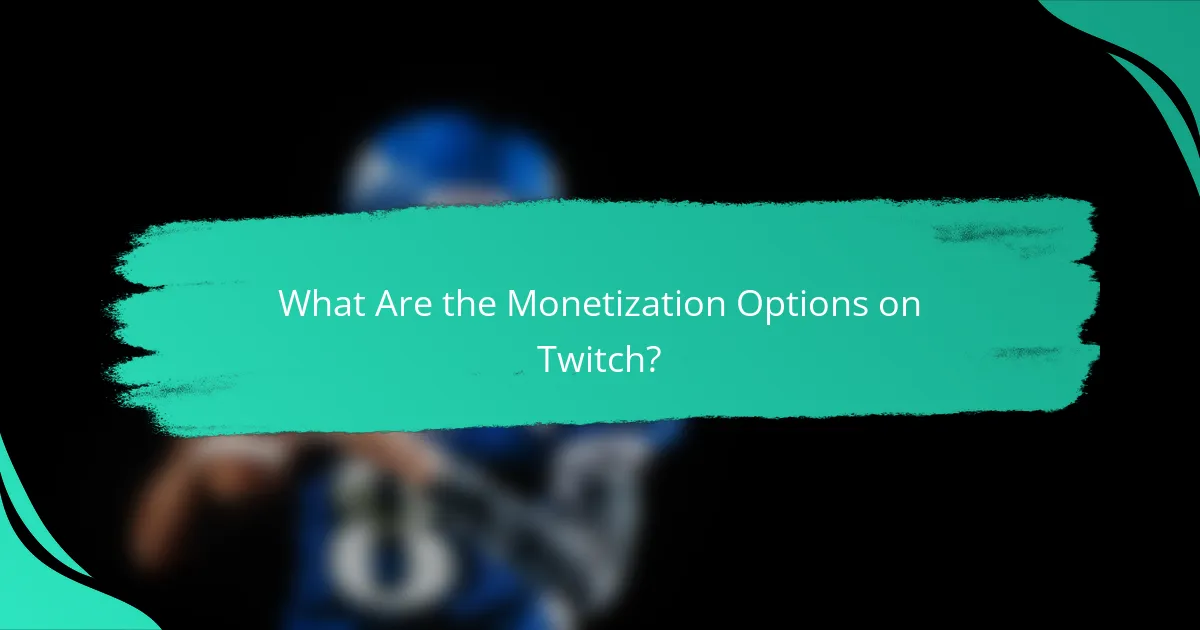Twitch has revolutionized live streaming by providing a platform where gamers and content creators can connect with their audiences in real-time. To succeed, streamers must focus on effective engagement strategies that foster interaction and build a loyal community. By creating a unique identity and collaborating with others, streamers can enhance viewer participation and cultivate a dedicated fandom.

How to Start Streaming on Twitch?
To start streaming on Twitch, you need to create an account, set up streaming software, choose your equipment, configure your settings, and then go live. Each step is crucial for ensuring a smooth streaming experience and engaging with your audience effectively.
Create a Twitch Account
Creating a Twitch account is the first step to becoming a streamer. Visit the Twitch website and click on the “Sign Up” button to fill in your details, including a username, password, and email address. Ensure your username reflects your brand or gaming persona, as it will be your identity on the platform.
After signing up, verify your email to activate your account. You may also want to enable two-factor authentication for added security, which is highly recommended for streamers.
Set Up Streaming Software
Streaming software is essential for broadcasting your gameplay or content to Twitch. Popular options include OBS Studio, Streamlabs OBS, and XSplit. Each software has its own features, but OBS Studio is widely favored for its flexibility and being free.
Download and install your chosen software, then follow the setup wizard to configure your stream settings. Familiarize yourself with the interface and features, such as scene creation and audio mixing, to enhance your streaming quality.
Choose Your Streaming Equipment
Your streaming equipment can significantly impact the quality of your broadcast. At a minimum, you will need a good microphone and a webcam. A USB microphone can cost around $50 to $150, while webcams range from $30 to $200 depending on the quality.
For gaming, a powerful computer or console is necessary to handle both the game and the streaming software. Consider investing in a capture card if you’re streaming from a console, as it can improve video quality and reduce lag.
Configure Stream Settings
Configuring your stream settings is vital for optimal performance. Set your resolution to 720p or 1080p, depending on your internet speed and computer capabilities. A bitrate of 3000 to 6000 kbps is recommended for 1080p streaming.
Additionally, adjust your audio settings to ensure clear sound. Test your stream with a private broadcast to check for any issues with video or audio quality before going live.
Go Live on Twitch
Once everything is set up, you can go live on Twitch. In your streaming software, select the “Start Streaming” option, and then head to your Twitch dashboard to monitor your stream’s performance. Engage with your audience through the chat feature as you stream.
Promote your stream on social media platforms to attract viewers. Consistency is key, so establish a streaming schedule to build a loyal audience over time.

What Are the Best Engagement Strategies on Twitch?
The best engagement strategies on Twitch focus on fostering real-time interaction between streamers and their audiences. Effective techniques include utilizing chat interactions, incorporating polls and Q&A sessions, and hosting giveaways and contests to enhance viewer participation and loyalty.
Utilize Chat Interactions
Chat interactions are vital for building a community on Twitch. Streamers should actively engage with viewers by responding to comments, asking questions, and acknowledging individual contributions. This creates a welcoming atmosphere that encourages more viewers to participate.
Consider using chatbots to manage interactions and highlight specific messages. Bots can help moderate discussions and trigger fun responses or alerts, enhancing the overall experience. However, avoid overwhelming viewers with too many automated messages, as this can detract from genuine engagement.
Incorporate Polls and Q&A
Polls and Q&A sessions are effective tools for engaging viewers and gathering feedback. Streamers can use built-in Twitch features or third-party tools to create polls that allow viewers to vote on game choices, stream topics, or other interactive elements. This not only involves the audience but also gives them a sense of ownership in the content.
During Q&A sessions, streamers should encourage viewers to ask questions about gameplay, strategies, or personal interests. This interaction can deepen connections and make the audience feel valued. Keep these sessions structured to maintain focus and ensure that the most relevant questions are addressed.
Host Giveaways and Contests
Giveaways and contests can significantly boost viewer engagement and attract new followers. Streamers can offer prizes such as game codes, merchandise, or exclusive content to incentivize participation. Clearly outline the rules and entry methods to avoid confusion and ensure fairness.
To maximize impact, promote these events across social media platforms and during streams. Consider setting specific engagement criteria, such as following the channel or sharing the stream, to increase visibility and grow the audience. However, be cautious of potential pitfalls, such as attracting viewers solely for giveaways without fostering genuine interest in the content.

How to Build a Fandom on Twitch?
Building a fandom on Twitch requires creating a strong community around your channel through engagement, branding, and collaboration. Focus on establishing a unique identity, interacting with viewers consistently, and partnering with other streamers to expand your reach.
Develop a Unique Brand Identity
Your brand identity on Twitch should reflect your personality and content style. This includes your channel name, logo, color scheme, and overall aesthetic. Consistency in these elements helps viewers recognize and remember your channel.
Consider what makes you different from other streamers. Whether it’s your gaming skills, humor, or niche interests, highlight these aspects in your branding. This uniqueness can attract a dedicated audience who resonates with your content.
Engage with Your Community Regularly
Regular engagement with your community is crucial for building a loyal fandom. Use live chat during streams to interact with viewers, respond to comments, and ask for feedback. This two-way communication fosters a sense of belonging among your audience.
In addition to streaming, consider hosting community events, such as game nights or Q&A sessions. These activities can deepen connections and encourage viewers to become more involved with your channel.
Collaborate with Other Streamers
Collaborating with other streamers can significantly enhance your visibility and attract new viewers. Look for streamers with similar interests or audiences and propose joint streams or events. This cross-promotion can introduce your channel to a broader audience.
When collaborating, ensure that both parties benefit from the partnership. Share each other’s content on social media and engage with each other’s communities to maximize the impact of the collaboration.

What Tools Enhance Twitch Streaming Experience?
Several tools can significantly enhance the Twitch streaming experience by improving viewer engagement and stream management. Utilizing the right software can help streamers create a more interactive and professional environment for their audience.
Streamlabs for Alerts and Overlays
Streamlabs is a popular tool that provides customizable alerts and overlays for Twitch streams. Streamers can set up notifications for new followers, donations, and subscriptions, which helps to engage viewers and encourage interaction.
To get started, create an account on Streamlabs and link it to your Twitch profile. You can then choose from various themes and alert styles to match your channel’s branding. Regularly updating your overlays can keep your stream fresh and visually appealing.
Discord for Community Building
Discord serves as an excellent platform for building a community around your Twitch channel. It allows streamers to interact with their audience outside of live streams, fostering a sense of belonging and loyalty among fans.
Set up a Discord server where viewers can chat, share content, and receive updates about your streaming schedule. Consider creating specific channels for different topics, such as game discussions or announcements, to keep conversations organized and engaging.
OBS Studio for Streaming Management
OBS Studio is a powerful tool for managing your Twitch streams, offering extensive customization options for video and audio settings. It allows streamers to control scenes, sources, and transitions, ensuring a polished broadcast.
When using OBS, familiarize yourself with its interface and features, such as scene transitions and audio mixing. Regularly test your settings before going live to avoid technical issues, and consider using plugins to enhance functionality, like adding chat overlays or stream alerts.

What Are the Monetization Options on Twitch?
Twitch offers several monetization options for streamers, allowing them to earn income through various methods. These include subscriptions, viewer donations via Bits, and ad revenue from sponsored content.
Subscriptions for Regular Income
Subscriptions provide streamers with a steady income stream from their viewers. Fans can subscribe at different tiers, typically ranging from $4.99 to $24.99 per month, with higher tiers offering additional perks like exclusive emotes and chat privileges.
Streamers receive a share of the subscription fee, which can vary based on their partnership status with Twitch. It’s crucial for streamers to engage their audience to encourage subscriptions, as loyal viewers are more likely to support them financially.
Bits as Viewer Donations
Bits are a form of virtual currency that viewers can purchase and use to cheer for their favorite streamers during live broadcasts. Each Bit is worth approximately $0.01, providing a direct way for fans to show appreciation and support.
Streamers earn a portion of the revenue from Bits, making it an effective means of receiving donations. Encouraging viewers to use Bits can enhance community engagement, but streamers should be mindful of not overemphasizing this method to avoid alienating their audience.
Ad Revenue from Sponsored Content
Streamers can earn money through ad revenue by running advertisements during their streams. This can include pre-roll ads, mid-roll ads, or sponsored segments, depending on the agreement with advertisers.
The revenue from ads can vary significantly based on viewer count and engagement levels. Streamers should balance the frequency of ads with viewer experience, as excessive advertising may drive viewers away. It’s often beneficial to integrate sponsored content naturally into streams to maintain audience interest.

How to Analyze Twitch Stream Performance?
To analyze Twitch stream performance, focus on key metrics such as viewer count, engagement rates, and chat activity. These indicators help assess the effectiveness of your content and identify areas for improvement.
Key Metrics to Track
Important metrics for Twitch stream analysis include average viewers, peak viewers, and watch time. Average viewers indicate how many people are consistently watching your stream, while peak viewers show the highest number at any point. Watch time reflects total hours viewers spend on your stream, which can highlight overall engagement.
Engagement metrics such as chat messages, subscriptions, and donations also provide insight into viewer interaction. A higher number of chat messages suggests active participation, while subscriptions and donations indicate viewer support and loyalty.
Tools for Performance Analysis
Utilize tools like Twitch’s built-in analytics, Streamlabs, or SullyGnome to gather data on your stream performance. Twitch’s analytics dashboard offers insights into viewer demographics, stream duration, and engagement metrics. Third-party tools can provide additional features like historical data comparison and in-depth engagement analysis.
When selecting tools, consider ease of use and the specific metrics you want to track. Some tools may offer free versions with limited features, while others require a subscription for comprehensive data.
Improving Stream Performance
To enhance your Twitch stream performance, focus on content quality and viewer interaction. Regularly engage with your audience through chat and respond to comments to foster a sense of community. Experiment with different content types, such as gameplay, tutorials, or Q&A sessions, to see what resonates best with your viewers.
Additionally, promote your streams on social media platforms to attract new viewers. Consistency in streaming schedule and branding can also help build a loyal audience over time.
